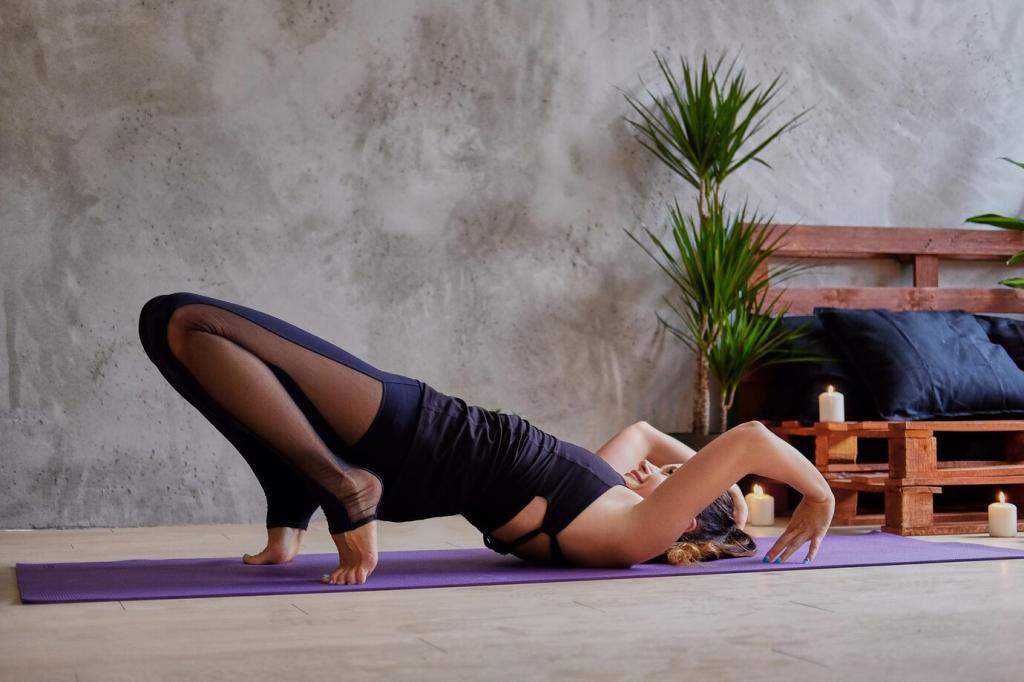Chosen theme: Yoga Breathing Techniques for Recovery. Breathe gently back to strength with approachable practices, uplifting stories, and science-backed guidance. Join our community, subscribe for weekly breath sessions, and share how your recovery is unfolding—one intentional inhale at a time.
Why Breath Heals: The Science of Recovery-Oriented Pranayama
When you guide the breath low and wide into the diaphragm, the vagus nerve gets a friendly nudge, heart rate variability improves, and the body releases its grip on stress. This shift encourages circulation, steadier oxygen delivery, and quieter pain signals. Comment with one moment today when a slower exhale noticeably softened your tension.
Research suggests that slow breathing around six breaths per minute can lift heart rate variability and gently reduce blood pressure over time. The effect is not instant magic, but consistent practice yields steady improvements. Try two minutes daily this week, then tell us how your energy and sleep change.
After ankle surgery, Maya felt panicky during early rehab. She paired simple 4-in, 6-out breaths with gentle ankle pumps, then added soft ujjayi. Within ten days, swelling sessions felt less overwhelming. Share your own story below, and subscribe if you’d like an audio guide for those first, wobbly days.

Starting Gently: Diaphragmatic Breathing You Can Do Anywhere
Set-Up and Posture for Comfort
Lie on your back or sit tall, shoulders relaxed, jaw soft, and lips closed for easy nasal breathing. Use a folded towel under your head if your neck tightens. If you are dealing with medical concerns, get clearance, then start with short, frequent sessions. Tell us which position felt best today.
Counted Breaths: 4-In, 6-Out to Ease Tension
Inhale through the nose for a calm count of four, feeling the belly expand; exhale for six, allowing the ribs to melt inward. Keep the throat relaxed and the breath quiet. If dizziness appears, reduce counts and rest. Post your favorite ratio so others can experiment safely.
Invite Feedback: Hand Cues and Daily Check-Ins
Place one hand on your belly and one on your lower ribs to feel expansion. Note three sensations after two minutes—warmth, softness, or stillness. Track them in a simple journal. Comment with your top sensation today, and subscribe to receive our printable daily check-in sheet.
Steady the Mind: Box Breathing and 4-7-8 for Deeper Reset
Try a four-part rhythm: inhale four, hold four, exhale four, hold four. Keep the shoulders easy and the face soft. If holding feels edgy, shorten or skip the pauses. Share how this pattern influenced your concentration during exercises, and encourage others with your adjustments.
Steady the Mind: Box Breathing and 4-7-8 for Deeper Reset
Inhale four, hold seven, exhale eight with a gentle whoosh or whisper through the lips. It can help settle nervous system chatter and reduce perceived pain. Avoid right after large meals. Subscribe to receive a calming evening audio track, and tell us whether it helped you fall asleep faster.


Balance and Clarity: Alternate Nostril Breathing (Nadi Shodhana)
With the right hand, lightly close the right nostril, inhale left; switch, exhale right, inhale right; switch, exhale left. Keep the movements soft and the breath smooth. No forcing. Try five gentle cycles, then share what felt surprisingly easy or challenging today.


Balance and Clarity: Alternate Nostril Breathing (Nadi Shodhana)
Use alternate nostril breathing before physical therapy to sharpen focus, before work to ease jitters, or in the afternoon to refresh concentration. Two minutes can be enough. Tell us when you tried it and how your mood or clarity shifted afterward.
Bring the lips together and hum like a friendly bee, feeling vibration behind the face and around the ears. Aim for long, unforced exhalations. Avoid if you have ear discomfort. Try five rounds, then share what the vibration changed for your mood or sleep quality.
Soothe With Sound: Bhramari and Gentle Ujjayi
Create a gentle ocean sound in the throat without gripping. Use it during slow walks to maintain rhythmic breathing and reduce overexertion. If your throat tightens, lighten the sound or return to quiet nasal breathing. Tell us how it changed your walking pace and comfort.
Soothe With Sound: Bhramari and Gentle Ujjayi
Add two-minute breaths after brushing teeth, before opening email, or while waiting for the kettle. Small, predictable anchors keep momentum during recovery. Comment with your favorite anchor idea, and we will compile the best tips in next week’s newsletter.
